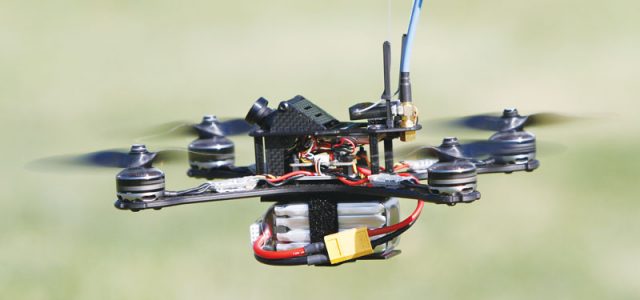The QAV-XS is a lightweight stretch X designed for high-speed racing action. The airframe is constructed of nicely finished carbon plates, which are joined together using aluminum standoffs. When you purchase the QAV-XS, you get the bare airframe. You will need to provide all the electronics for flight (flight controller, motors and speed controls, and radio and receiver) as well as the first-person-view (FPV) equipment, like the video transmitter and camera.
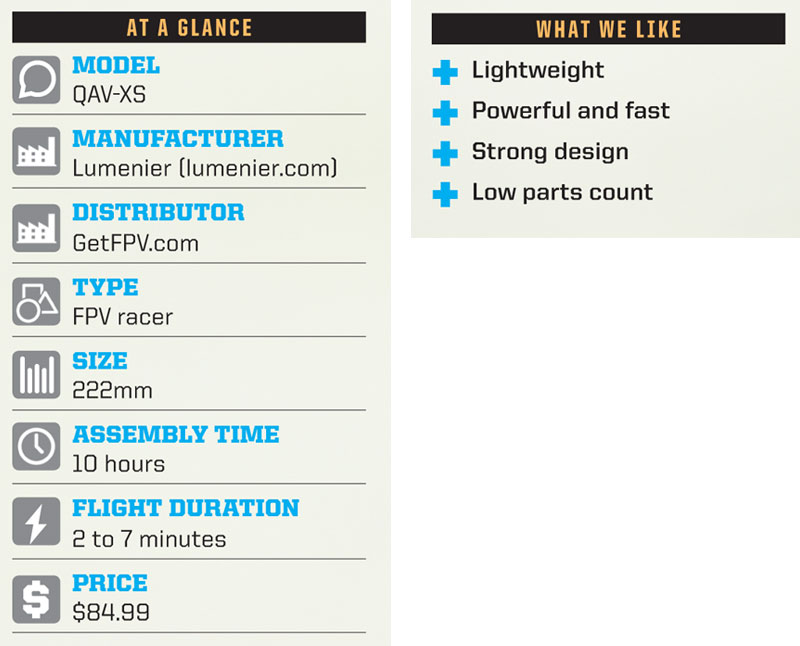
Assembly of the airframe is straightforward. The use of a one-piece main frame really helps simplify things. The installation of the electronics will require soldering and customization for a nice, clean installation. You’ll need a soldering iron and solder, a 2.0mm Allen driver, a small Phillips screwdriver, and a pair of pliers. When you build a small racing quad like this, everything is really an option. That being said, I built the QAV-XS in a very “stock” manner. No modification was necessary.
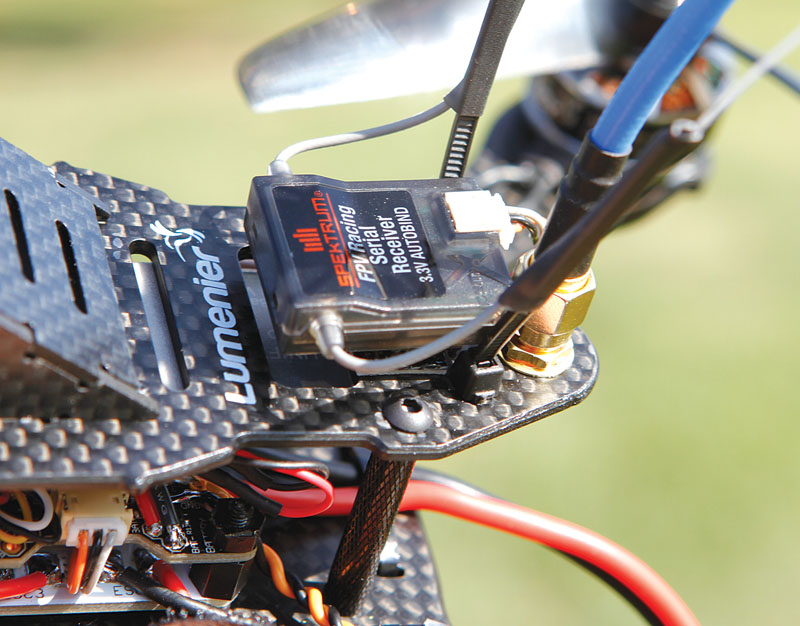
ROTOR HEAD
The top plate is the perfect platform for your receiver of choice.
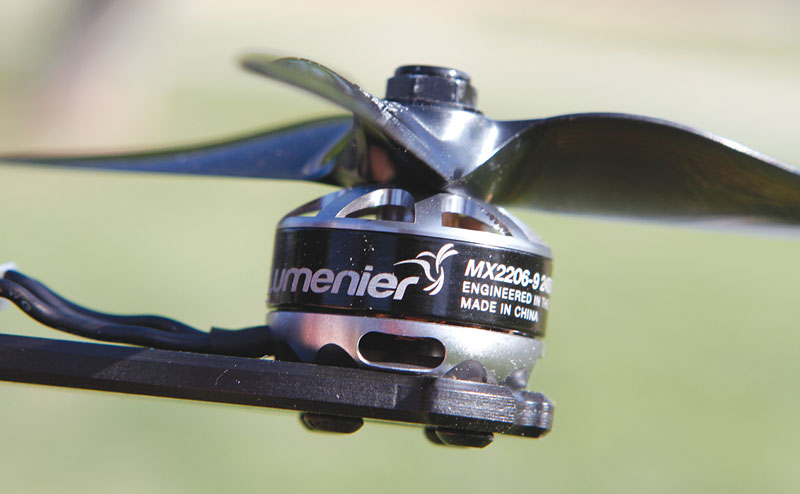
MOTORS
Lumenier MX2206-9 2450Kv motors are a perfect combination with this frame.
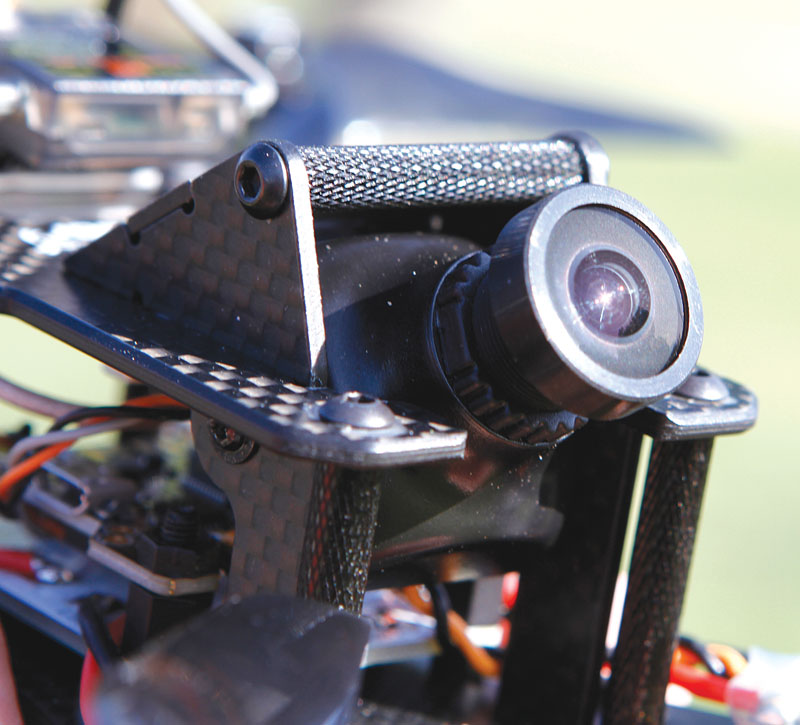
CAMERA
The built-in camera mount works perfectly with Sony Super HAD cameras.
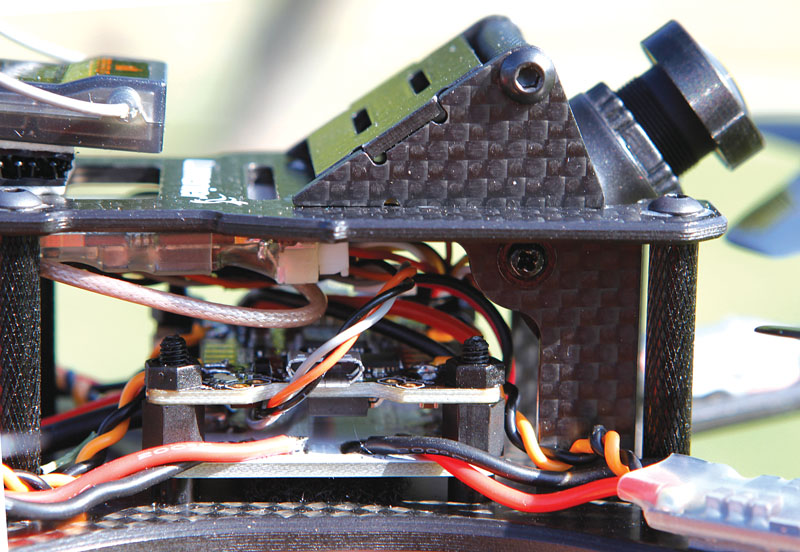
ELECTRONICS
The fit is a bit tight, but with a little planning, you can get it all in there.
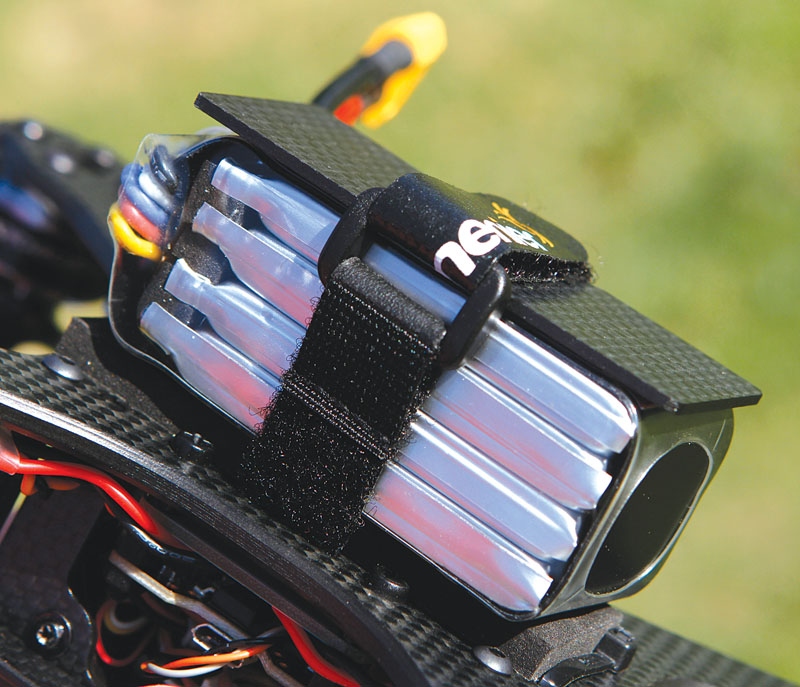
BATTERIES
The included carbon battery guard did a great job protecting my Thunder Power 4S 1300mAh Adrenaline pack.
The area designed for your FPV gear is fairly compact on this model, so be sure to think carefully about the video transmitter you want to use. I went with the TBS Unify Pro HV, and I was very happy with the fit. Also know that this ship is designed around an HS1177-style camera, such as the Sony Super HAD or Foxeer XAT600M. My number one tip to anyone building this racer is to take your time and lay things out ahead of time. Keep wire lengths to a minimum and you will be just fine.
Aerial Recap
With the Lumenier MX2206-9 2450Kv motors controlled by Blade Thrust 20-amp Opto speed controls and spinning Lumenier 5x5x3 Butter Cutter props on a Thunder Power 4S 1300mAh 80C pack, this quad is a rocket ship. From a solid hover, a blip of full throttle puts you up at least 100 feet before you can get out of it and bring her back down. This power system is definitely a great combination!
Flight time is going to vary greatly depending on flying style. In all-out racing action, even a 1300mAh pack can be depleted in two to three minutes. If you are taking it easy, just cruising around the park, you can expect five- to seven-minute flights.
Responsiveness is something at which the QAV-XS really excels. It is quick and nimble. The stretch-X design really handles well and carves the turns. Using Betaflight (or your preferred firmware), you can tune this quad to be as smooth or erratic as you prefer. With the proper amount of RC rates and expo, you can make this a smooth-flying machine that will still perform quick flips. It is all a matter of personal preference and experience. I can’t wait to fine-tune the Furious FPV controller I’m using and see what I can really do with this ship.
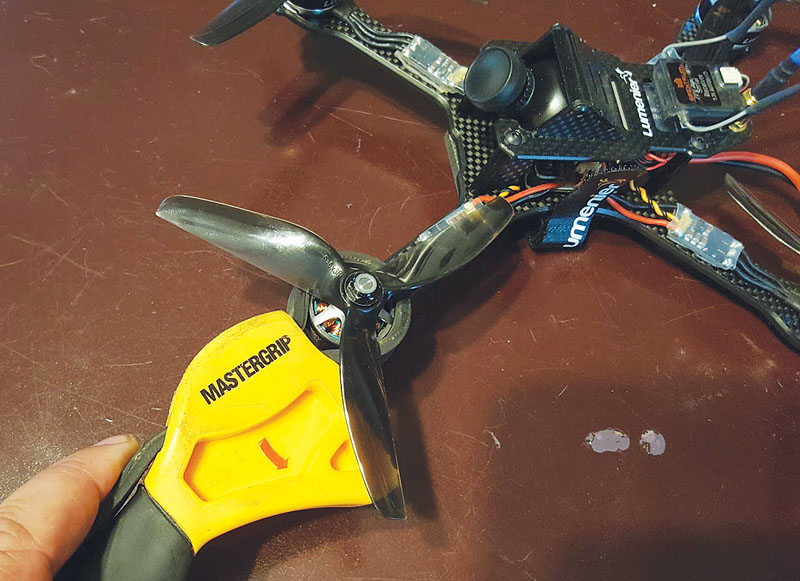
Get a Grip
Have you ever tried to remove a prop hub after a crash broke all the blades off your prop? Or have you ever had the trailing edge of a prop try to skin your thumb? Well, I have and it is not fun. There are some specialty tools on the market for this situation, but I recently discovered a tool that had been collecting dust in my garage that does a great job of helping me out with this: a small rubber strap wrench. I had bought a set for removing odd-size oil filters on my car, but it works well on props too. You can pick up a set of wrenches at Harbor Freight Tools (harborfreight.com) for about $5. Saving your fingers is worth every penny.
Bottom Line
If you have decent soldering skills, you can easily build the QAV-XS in a few afternoons. As I mentioned, space is at a premium on this racer, so think about your equipment selections prior to ordering your gear. Then, enjoy some assembly time and get ready to race!


